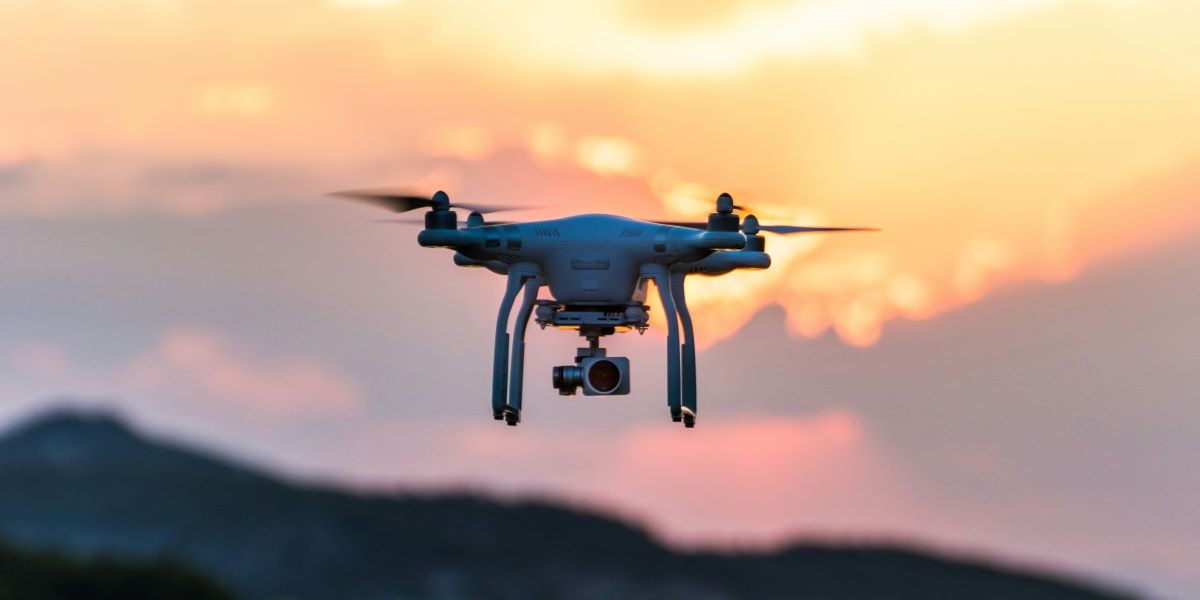5-minute read
Quick summary: Insights and strategies to help utilities gain approval and funding for asset image analytics by building a compelling business case
As utilities grapple with the challenges of aging infrastructure, rising costs, and increasing compliance demands, asset image analytics has emerged as an effective tool for optimizing their operations. And yet, despite its proven benefits, making a compelling business case to secure approval and funding remains a hurdle for some organizations.
In this article, we’ll delve into the advantages of asset image analytics and share insights from a recent engagement in which we helped a utility make the business case for expanding their drone analytics program.
Highlight the proven benefits of image analytics
Investing in asset image analytics can significantly transform utility operations by transforming images from drones, satellites, LiDAR, and other sources into decision-driving insights. Following are some of the key benefits that can support a strong business case.
Reduced inspection costs
One of the most compelling advantages of image analytics is reduction in inspection costs. Traditional methods such as helicopter inspections can cost up to $10,000 per day, and the cost of each truck roll can total as much as $1,000. By leveraging drones, satellites, and other image sources combined with advanced analytics, utilities can conduct cost-efficient aerial inspections and reduce the overall number of truck rolls, leading to substantial savings.
Increased safety and risk prediction
Utilities can leverage drones to obtain close-up images of assets from multiple angles while human inspectors remain safely on the ground, avoiding the dangers of pole climbs and helicopter flyovers.
Furthermore, asset image analytics enhances risk prediction by analyzing images to identify potential hazards before they become critical issues. Well-trained AI and machine learning algorithms can detect early signs of equipment wear, structural damage, and vegetation encroachment, enabling the utility to address these risks proactively and reduce the likelihood of accidents and outages.
Improved emergency decision making
In the wake of an emergency, data-driven insights are the key to prompt and effective decision making that can save lives and protect communities. With asset image analytics, utilities quickly assess damage from storms, wildfires, and other extreme events using images from drones, satellites, truck-mounted cameras, and even mobile phones.
By integrating image-based insights with other data sources such as weather forecasts, utilities can prioritize areas for immediate action, optimize resource allocation, and enhance overall situational awareness. These capabilities minimize downtime and expedite the restoration of service, ensuring a faster and more efficient response to emergency situations.
Optimized operations
While an average lineman might perform two detailed asset inspections per day, drones can perform as many as 20, and satellites can capture high-resolution images of vast areas in a single pass. This increased efficiency not only reduces operational costs, but also enables more frequent and comprehensive monitoring of utility assets to drive proactive maintenance.
Success story: Building the case for a drone analytics program
When a Midwestern utility sought to expand its drone program and enhance its asset image analytics capabilities, they knew they needed a business case to secure approval and funding. Here’s how we helped them achieve this goal.
The objective
Our client needed to build a robust business case for expanding the utility’s drone program to reduce truck rolls, supplement inspection processes, and improve access to hard-to-reach areas. To achieve this, they needed to present a compelling argument to leadership, backed by data and a clear plan for implementation.
The process
We began by documenting the utility’s current state of imagery classification maturity through a thorough review of existing processes, tools, and data. Next, we set out to gain a deep understanding of their data, processes, and tools. We held meetings with various stakeholder groups, including analytics, renewables generation, forestry, and GIS as well as the drone program team, to gather comprehensive insights. Armed with this information, we conducted a gap analysis to identify areas needing improvement and created high-level value stream maps to represent current processes and highlight potential enhancements.
The result
Our team delivered a portfolio of data-backed assets to support our client’s business case, including:
- Current state and gap assessment: We delivered an assessment of the current state and identified gaps that needed to be addressed to move forward with the highest-value initiatives.
- Value stream maps: We developed high-level value stream maps representing current processes and highlighting opportunities for improvement.
- Prioritization matrix: Our matrix presented use cases in quadrants according to feasibility and impact, facilitating prioritization over short, medium, and long-term horizons.
- Implementation roadmap: We developed a comprehensive implementation roadmap spanning four lines of business. This four-year plan outlined how to enhance the image analytics program, detailing steps for improvement and expansion.
- Maturity model benchmarking: We helped our client understand their program’s status compared with other utilities by placing them on our image analytics maturity model spectrum.
By systematically addressing these areas, we enabled our client to present a clear, data-driven business case. This case demonstrated the tangible benefits of expanding their drone program and asset image analytics capabilities, ultimately securing the necessary funding and support from leadership.
WEBINAR
How asset image analytics supercharges utility operations
WHITE PAPER
Transforming utility operations with asset image analytics
Key takeaways for success
Every utility is different, with unique challenges and needs. However, the fundamental approach to building a compelling business case for asset image analytics can be leveraged in any organization:
- Assess the current situation to understand existing processes and data maturity.
- Identify the gaps between current state and desired state.
- Present use cases that highlight the feasibility and impact of a strategically planned asset image analytics program, prioritized according to feasibility and impact.
- Create a long-term strategic roadmap that outlines the steps for implementation and future growth.
By following this structured approach, utilities can develop a compelling portfolio of assets that demonstrate to leadership the value of investing in an asset image analytics program.
Leading the way to a smarter future
The journey of building a business case for asset image analytics is more than just compiling numbers and creating a pitch deck. It’s about envisioning a future where utility operations are more efficient, safer, and smarter. As we move deeper into the age of digital transformation, the utilities that will thrive are those that leverage cutting-edge technologies to address both present challenges and future uncertainties.
The true power of asset image analytics lies in turning raw data into actionable insights that transform the way utilities inspect, maintain, and protect critical infrastructure. This advancement goes beyond reducing costs or improving safety—it redefines the potential of utility management.
The real question is how far utilities are willing to go to harness this potential. Embracing asset image analytics represents a significant leap into a more resilient and innovative future. By building a compelling business case, utilities can secure the approval and funding needed to implement these technologies, ensuring they lead the charge toward a smarter, more efficient, and safer future. The groundwork laid today will determine the agility and strength of operations tomorrow, positioning forward-thinking utilities at the forefront of the industry’s transformation.

Asset Image Analytics
Logic20/20 leverages the latest in machine learning and AI to develop impactful asset image analytics solutions for:


Sacha Stjepanovic, Senior Director for National Utilities at Logic20/20, is responsible for partnering with the utility sector on advanced analytics, digital transformation, and grid operations solutions.

